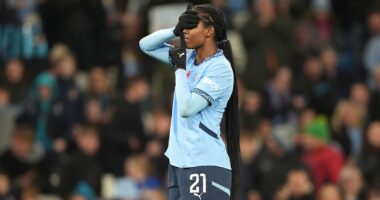Always perfectly dressed, with a throaty, indefinable accent and a groomed white beard, he carried a well-worn brown leather briefcase and was a familiar figure making his way along Middle Abbey Street to and from his desk in the Dickensian warren of Independent House. A gentleman in every sense of the word, he queried news or feature copy that crossed his desk when required, or sought clarification in a calm, unruffled fashion. He was well-read with a deep and broad knowledge of current affairs, history (including military) and literature and was a repository of great wisdom which he shared in an unassuming manner. It was these qualities which made him invaluable under successive editors of the Sunday Independent over a period of 40 years — Hector Legge, Conor O’Brien, Michael Hand and -Aengus Fanning. He used to joke that he was one of the few people to “’emigrate’ to Ireland in the mid-1950s In a throwback to former times, he smoked incessantly and was known to join convivial companions in the “newspaper pubs” in the vicinity — the Oval, Higgins, the Bachelor Inn, and the Horse & Tram. There he enjoyed a Glenfiddich, although he was often first to leave the company to get the train and later the Dart home to Greystones, Co Wicklow, where he lived most of his life. John Kearney was born to Irish -parents in Northwood, Middlesex, a suburb of London. His father, an -anti-Treaty IRA man from Dunmanway, Co Cork, left Ireland after the Civil War and his mother was from Dublin. Ironically, although he was regarded as a quintessential Englishman “he was anything but”, said his daughter, Liz, who followed him into journalism and is now group head of features at Mediahuis Ireland. He was an only child and a seminal moment of his life occurred in 1944 when his street was hit by a German V2 bomb. The roof was blown off the Kearney house and a neighbour killed as well as extensive damage caused to other houses on the street. It was an event that remained with him for the rest of his life. He was educated in nearby Pinner, did his national service and later graduated from university with a degree in English and French. He then went to art college and attained a high degree of skill as a draughtsman. He used to joke that he was one of the few people to “emigrate” to -Ireland in the mid-1950s, when most people were going in the other direction. He came back with his elderly parents and cared for them until their deaths. John was often happiest in the company of fellow subs He and his future wife, Annette, were living in flats in Idrone -Terrace, Blackrock, when they met. By that time, he had worked in the advertising department of The Irish Times and Castle Publications, before applying for a job in the Sunday -Independent. Office lore had it that his smart appearance, particularly his cuff links, impressed the then editor Legge, who hired him as a sub-editor in 1965, a position he retained until his retirement in 2005 at the age of 72. During that time he also contributed cartoons to the newspaper and occasional articles. His great friend, the legendary journalist Joe MacAnthony, who was best man at his wedding, enjoyed telling the story that before the ceremony Annette asked the priest if they could read a poem during the service. The reverend demurred, until she astonished him by saying, sotto voce: “We won’t tell the Pope, will we?” The couple moved to Greystones in 1975 and had two daughters, Emma and Liz. Through John’s long tenure at the paper, he came to know many of its journalists and writers well, but was often happiest in the company of fellow subs, discussing newspaper production, great events of the day and telling stories of the conflicts in the caseroom, where the final newspaper product was assembled. John’s main focus was drawing (laying out) the pages of the Sunday Independent and, in the era of hot metal — when the newspaper type was set in slugs of lead — seeing that this work translated into the finished product. He had a good working relationship (which often was not easy) with the compositors who carried out this task and worked with them at a big metal table in the caseroom, known as “the stone”. The printers were quick to down tools if they felt someone from the journalism side had overstepped the mark, and this could lead to delays in the printing press and even put production of the paper at risk. It often required delicate diplomatic skills, such as John’s, to avert such a -catastrophe with deadlines looming. John was trenchantly left wing and a committed member of the National Union of Journalists (NUJ). He was elected father of the chapel, the rather quaint journalistic term for union shop steward, on several occasions at important junctures in the development of the newspaper group, then owned by Tony O’Reilly. Outside of the newspaper, John was described as a “loving husband and family man” who liked his own company, his books and right up until the time of his death continued to be a voracious reader of newspapers, also completing the crosswords. Although he was within a month of reaching the age of 92, he “never lost interest” in current affairs and enjoyed good company and a glass of wine. John Kearney, who was born on July 21, 1932, died at home on -Tuesday, June 11. He is survived by his wife Annette, daughters Emma and Elizabeth, son-in-law Carl and grandchildren Oisín and Conor. His funeral was private and a service in his memory, for friends and colleagues, will be held at a later date.
Subscribe
Login
0 Comments





